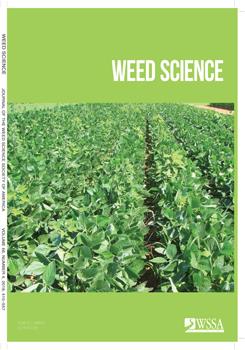Knowledge of the effects of burial depth and burial duration on seed viability and, consequently, seedbank persistence of Palmer amaranth (Amaranthus palmeri S. Watson) and waterhemp [Amaranthus tuberculatus (Moq.) J. D. Sauer] ecotypes can be used for the development of efficient weed management programs. This is of particular interest, given the great fecundity of both species and, consequently, their high seedbank replenishment potential. Seeds of both species collected from five different locations across the United States were investigated in seven states (sites) with different soil and climatic conditions. Seeds were placed at two depths (0 and 15cm) for 3 yr. Each year, seeds were retrieved, and seed damage (shrunken, malformed, or broken) plus losses (deteriorated and futile germination) and viability were evaluated. Greater seed damage plus loss averaged across seed origin, burial depth, and year was recorded for lots tested at Illinois (51.3% and 51.8%) followed by Tennessee (40.5% and 45.1%) and Missouri (39.2% and 42%) for A. palmeri and A. tuberculatus, respectively. The site differences for seed persistence were probably due to higher volumetric water content at these sites. Rates of seed demise were directly proportional to burial depth (α=0.001), whereas the percentage of viable seeds recovered after 36 mo on the soil surface ranged from 4.1% to 4.3% compared with 5% to 5.3% at the 15-cm depth for A. palmeri and A. tuberculatus, respectively. Seed viability loss was greater in the seeds placed on the soil surface compared with the buried seeds. The greatest influences on seed viability were burial conditions and time and site-specific soil conditions, more so than geographical location. Thus, management of these weed species should focus on reducing seed shattering, enhancing seed removal from the soil surface, or adjusting tillage systems.
How to translate text using browser tools
1 July 2018
Seedbank Persistence of Palmer Amaranth (Amaranthus palmeri) and Waterhemp (Amaranthus tuberculatus) across Diverse Geographical Regions in the United States
Nicholas E. Korres,
Jason K. Norsworthy,
Bryan G. Young,
Daniel B. Reynolds,
William G. Johnson,
Shawn P. Conley,
Reid J. Smeda,
Thomas C. Mueller,
Douglas J. Spaunhorst,
Karla L. Gage,
Mark Loux,
Greg R. Kruger,
Muthukumar V. Bagavathiannan

Weed Science
Vol. 66 • No. 4
July-August 2018
Vol. 66 • No. 4
July-August 2018
burial depth
seed longevity
seed viability
seedbank dynamics
soil temperature
tetrazolium test
volumetric water content





